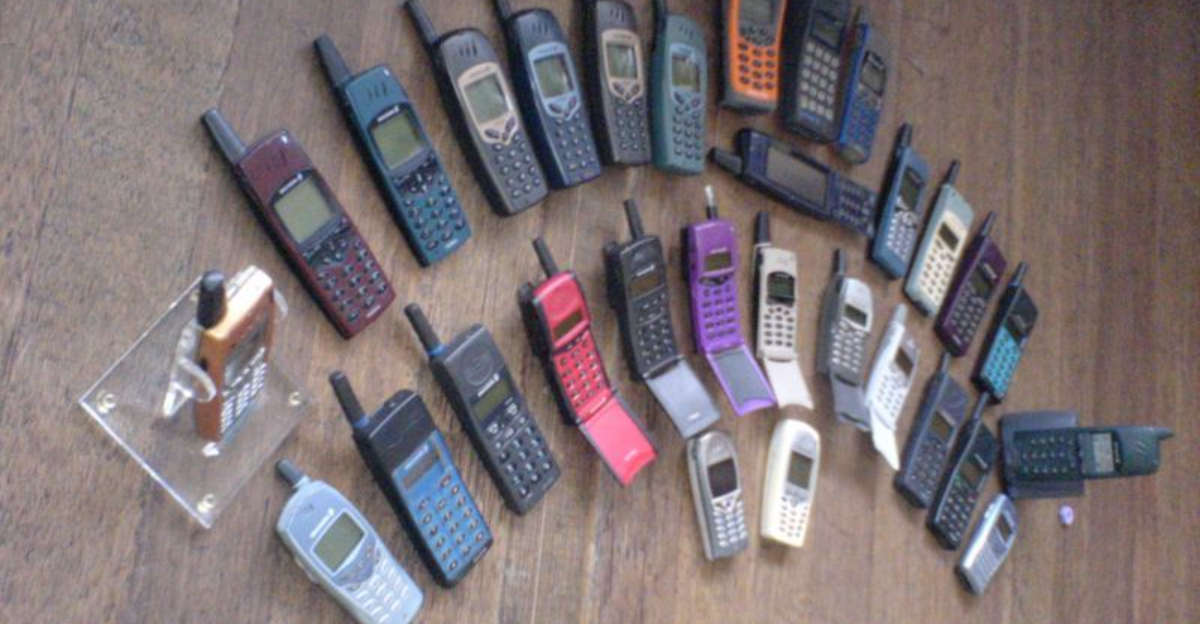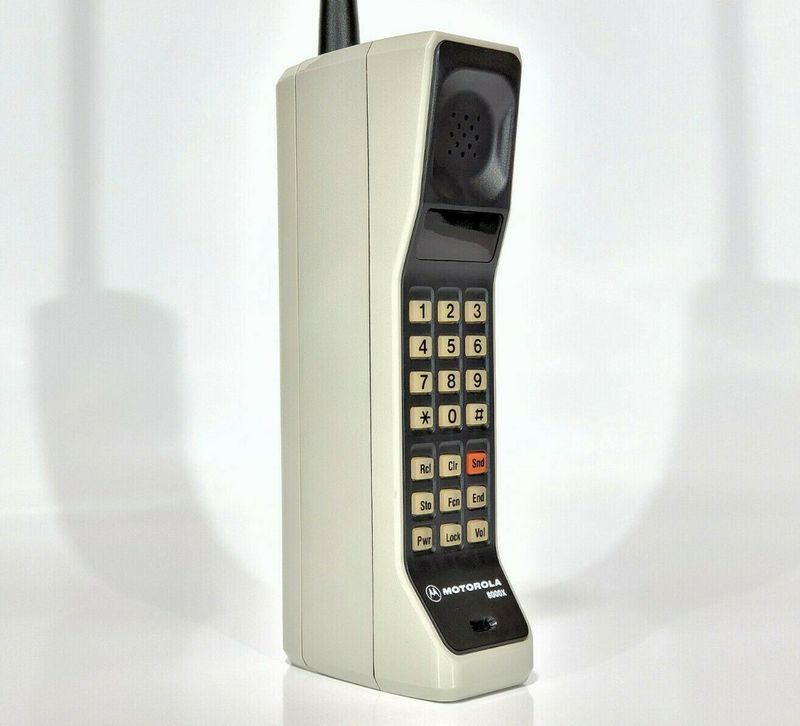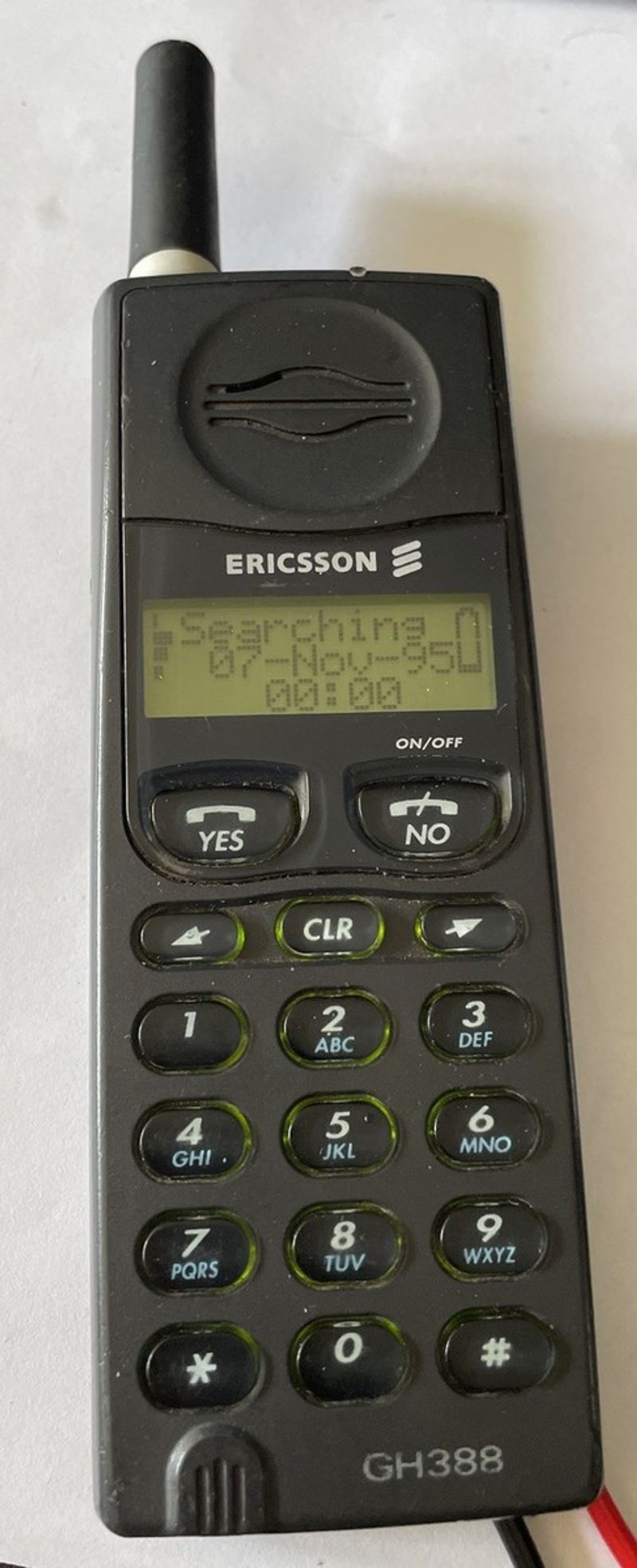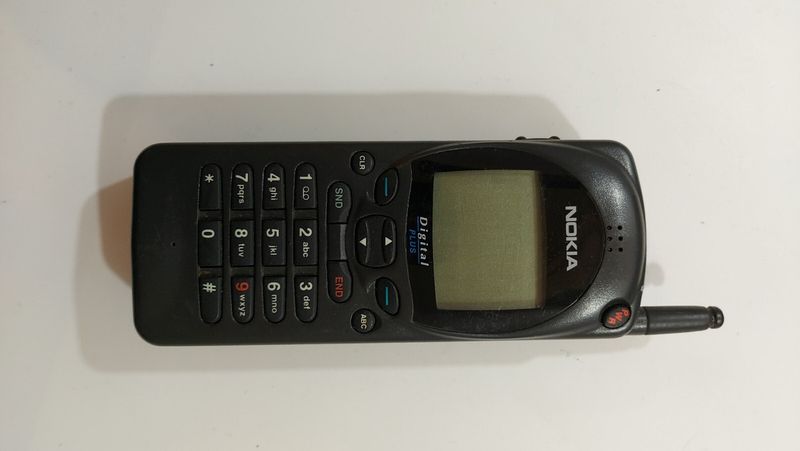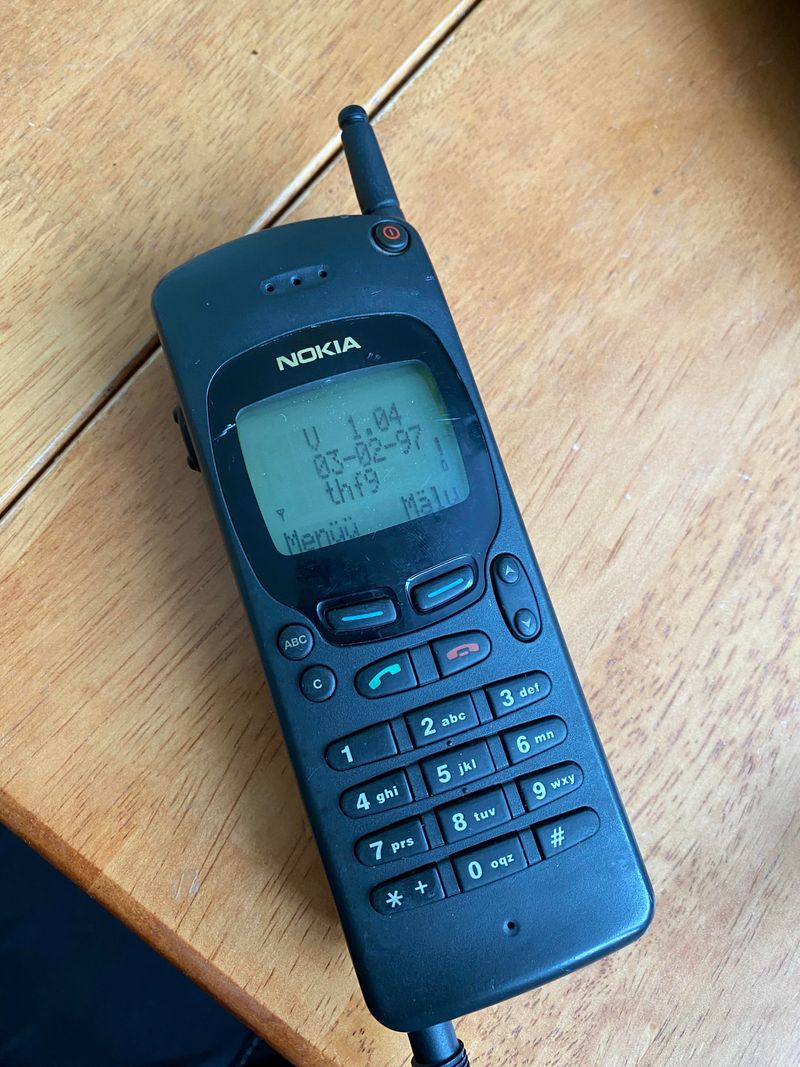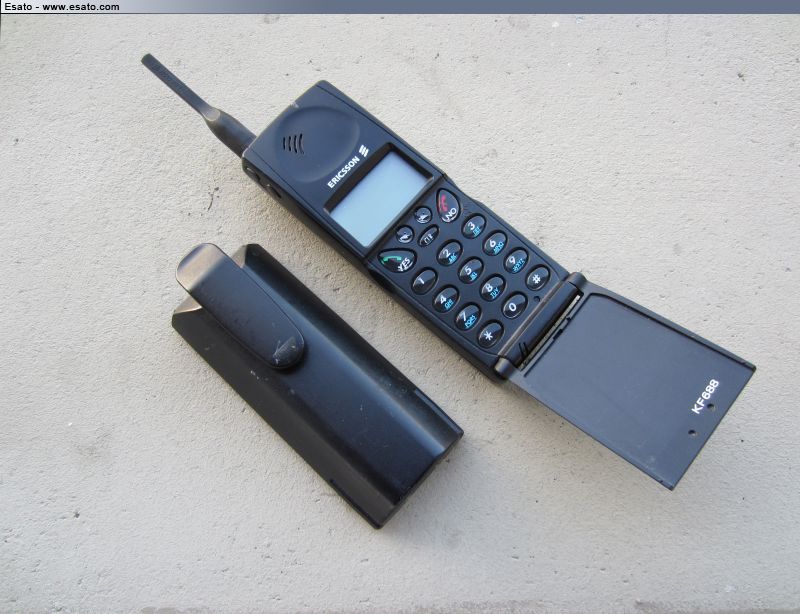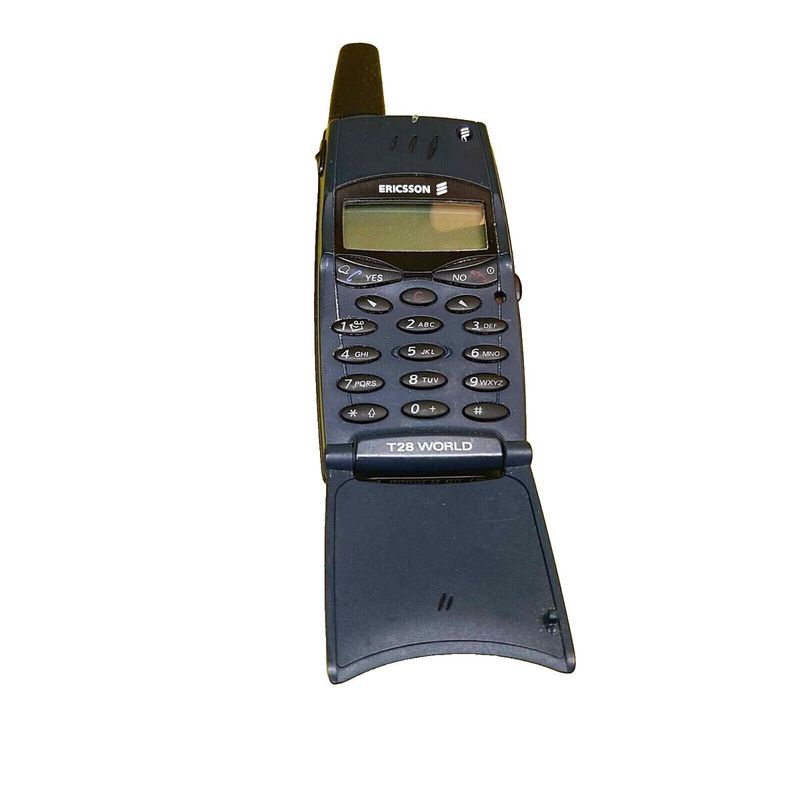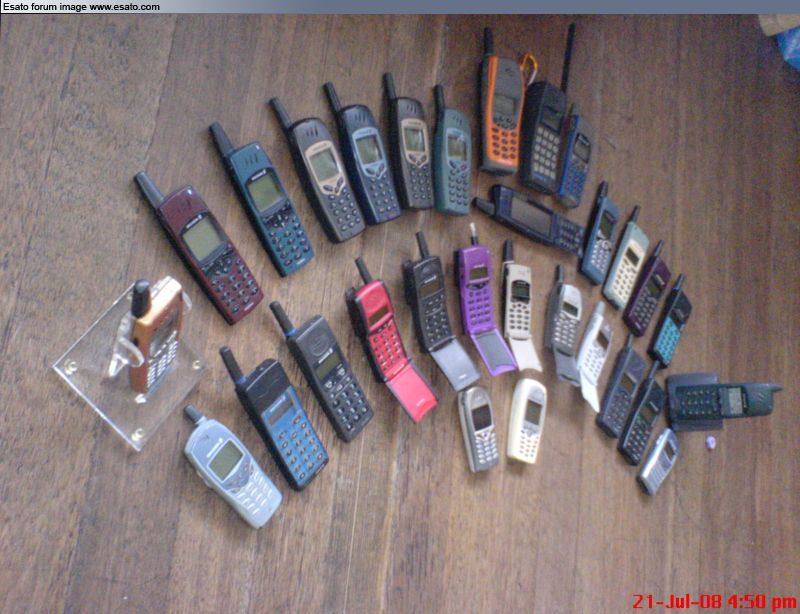Remember when mobile phones were more like bricks than the sleek devices we carry today? The early 1990s marked a fascinating transition period for cellular technology. Bulky status symbols gradually evolved into more practical communication tools as digital networks began replacing analog systems. These chunky, antenna-sporting devices may seem primitive now, but they revolutionized how we connect with each other.
1. Motorola DynaTAC 8000X: The Original Brick
Gordon Gekko’s famous companion in the movie “Wall Street” remained a powerful status symbol into the early ’90s. Weighing nearly two pounds and standing almost a foot tall, the DynaTAC demanded attention.
Despite its $4,000 price tag (equivalent to over $8,000 today), executives proudly displayed these conversation starters. The battery lasted barely 30 minutes of talk time, and recharging took hours.
Though newer models were available, many wealthy professionals held onto their DynaTACs as symbols of success and technological pioneering. Its distinctive silhouette defined an era of mobile communication.
2. Motorola MicroTAC 9800X: First Flip Phone Pioneer
Sleeker than its predecessor, the MicroTAC introduced the revolutionary flip design that would dominate mobile phones for over a decade. When closed, its mouthpiece folded up against the body, creating a more pocket-friendly profile.
Business travelers particularly appreciated its relatively lightweight frame and the psychological satisfaction of flipping it open to answer calls. The distinctive extending antenna became a familiar sight in airport lounges worldwide.
While still primarily an analog device, the MicroTAC represented Motorola’s commitment to miniaturization and portability—principles that would define mobile evolution for years to come.
3. Nokia 1011: Digital Revolution Starter
Launched on November 10, 1992 (hence its model number), the Nokia 1011 marked a genuine turning point in mobile communication. As the first mass-market GSM digital handset, it offered vastly improved call quality and the ability to send text messages.
Users marveled at its monochrome display and memory that could store an impressive 99 phone numbers. Though still bulky by today’s standards, its reliable performance made it a hit across Europe.
The 1011’s greatest legacy was making digital cellular service accessible to ordinary consumers, not just business elites. This rectangular black device with its stubby antenna helped establish Nokia as a telecommunications powerhouse.
4. Nokia 2110: The Executive’s Choice
Businesspeople across Europe fell in love with the sleek Nokia 2110 when it debuted in 1994. Its innovative navigation system—centered around the groundbreaking “Navi-Key”—made accessing menus intuitive for the first time.
At just 280 grams, it felt substantially lighter than earlier models. The extended battery life meant professionals could confidently use it throughout a workday without constant recharging.
Perhaps most memorably, this model introduced the iconic Nokia ringtone that would become instantly recognizable worldwide. The 2110’s blend of professional aesthetics and practical functionality cemented Nokia’s reputation for user-friendly design.
5. Motorola International 3200: Digital Pioneer
Affectionately nicknamed “the brick” despite being Motorola’s first digital GSM offering, the International 3200 arrived in 1992 with a hefty price tag and even heftier dimensions. Early adopters overlooked its bulk for the crystal-clear calls it provided.
Frequent international travelers particularly appreciated its ability to work across different countries as GSM networks expanded. The large battery compensated for power-hungry digital technology, offering reasonable usage between charges.
While not winning any beauty contests, this technological trailblazer helped establish digital cellular standards that eventually enabled global roaming. Its robust construction meant many units remained in service for years.
6. Ericsson GH388: Business Traveler’s Companion
Swedish manufacturer Ericsson captured significant market share with this reliable workhorse. Released in 1993, the GH388 quickly became the go-to choice for European executives who needed dependable communication across borders.
Its distinctive flip-down keypad cover protected the buttons while adding a satisfying tactile element to answering calls. Battery life exceeded most competitors, making it ideal for long business trips.
Ericsson’s reputation for engineering excellence showed in the phone’s durability—many units survived years of being tossed into briefcases and dropped on floors. The GH388’s straightforward interface prioritized calling functionality over gimmicks, appealing to no-nonsense professionals.
7. Nokia Talkman 900: The Car Phone Champion
Half mobile phone, half car accessory, the Talkman 900 represented the transitional technology between vehicle-mounted systems and truly portable devices. A handset connected to a larger base unit that drew power from the vehicle’s electrical system.
Sales representatives particularly valued its powerful transmission capabilities and extended range. The larger speaker provided clearer audio than fully portable alternatives, making it ideal for noisy environments.
For many users, the Talkman 900 served as their first experience with mobile communication. Its widespread adoption among service professionals helped normalize the concept of calling while on the move—though using it required remaining in or near your vehicle.
8. Nokia 2120: Mainstream Digital Adopter
Building on the success of earlier models, the Nokia 2120 helped bring digital mobile service to the masses from 1993 onward. Its rounded edges and more ergonomic design made it comfortable to hold during longer conversations.
Weighing about 330 grams, it struck a balance between durability and portability that appealed to everyday users. The improved battery efficiency meant less frequent charging—a significant selling point when power outlets weren’t always accessible.
As carrier competition increased and subscription prices dropped, the 2120 became one of the first phones widely adopted by non-business users. Its straightforward interface made it approachable for those new to mobile technology.
9. Nokia 1610: Affordable Digital Transition
When Nokia released the 1610 in 1994, they had a clear mission: make digital cellular technology affordable for average consumers. The strategy worked brilliantly, with millions of units sold across Europe and Asia.
Carriers frequently offered it free with service contracts, putting GSM technology in countless pockets for the first time. Its simplified interface featured only essential functions, making it accessible to technophobes.
Despite its budget positioning, the 1610 maintained Nokia’s reputation for reliability and durability. For many users worldwide, this unassuming device represented their first step into the digital communication age—cementing Nokia’s market dominance for years to come.
10. Ericsson SH888: Executive Innovation
Dubbed “the Swiss Army knife phone,” Ericsson’s SH888 featured a revolutionary design element: a detachable earpiece and microphone boom that allowed for hands-free operation before Bluetooth existed. Business executives could keep the main unit in a pocket while conducting calls through the connected headset.
The innovative approach addressed the growing concern about extended phone exposure. Its sophisticated styling—with a black and silver color scheme—appealed to fashion-conscious professionals.
Though not as widely adopted as some competitors, the SH888 demonstrated Ericsson’s forward-thinking approach to mobile design. Many of its ergonomic concepts would later become standard in bluetooth headsets and smartphone accessories.
11. Panasonic Timeport 902: Battery Life Champion
When Panasonic entered the mobile market with the Timeport 902 in 1994, they focused on solving users’ biggest frustration: battery life. With up to 200 minutes of talk time—nearly double some competitors—it quickly gained a loyal following among frequent callers.
The dual-band GSM capability provided more consistent coverage across Europe than single-band alternatives. Its straightforward interface prioritized essential functions without confusing extras.
Rural users particularly appreciated its robust signal reception in areas with spotty coverage. While lacking the brand recognition of Nokia or Motorola in Western markets, the Timeport’s practical advantages made it a sleeper hit among those who valued reliability over flash.
12. Motorola Flare: Fashion Forward Communication
Breaking away from the utilitarian designs dominating the market, Motorola’s Flare introduced style to mobile communication. Available in bold colors including vibrant red and electric blue, it targeted younger users who viewed phones as accessories rather than just tools.
The flip-down keypad cover added a dramatic flair to answering calls. Despite its fashionable appearance, the Flare maintained Motorola’s reputation for solid call quality on analog networks.
Fashion magazines featured the Flare alongside clothing and jewelry, marking an early instance of phones as style statements. This marketing approach helped expand the mobile phone market beyond business users to include style-conscious consumers—particularly in North America.
13. Siemens S1: German Engineering Excellence
German manufacturer Siemens entered the mobile arena with the S1 in 1994, bringing their reputation for precision engineering to telecommunications. The phone’s distinctive angular design and matte black finish projected sophisticated professionalism.
European business users appreciated its logical menu structure and exceptional voice clarity. Weighing just 230 grams, it was noticeably more pocket-friendly than many contemporaries.
The S1’s international roaming capabilities made it popular among continental travelers as Europe’s GSM networks expanded. Though Siemens was initially a minor player compared to Nokia and Motorola, the S1’s reliability helped establish the company as a serious contender in the rapidly growing mobile market.
14. Ericsson GH218: Scandinavian Simplicity
Swedish telecom giant Ericsson captured significant Northern European market share with the no-nonsense GH218. Released in 1993, it embodied Scandinavian design principles: functional, minimalist, and built to last.
The phone’s slightly curved back fit comfortably in hand during extended calls. Business users appreciated its straightforward interface that prioritized calling functions over complicated menus.
While not the flashiest option, the GH218 earned a reputation for exceptional reliability in harsh Nordic climates. Its robust construction and consistent performance made it particularly popular in Sweden, Norway, and Finland, where practical functionality often outweighed aesthetic considerations.
